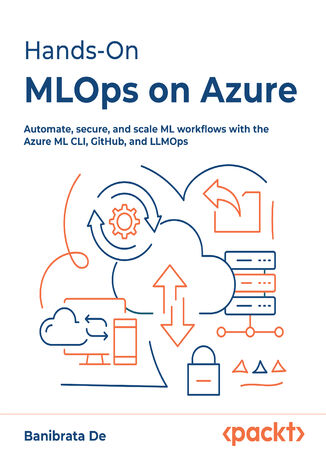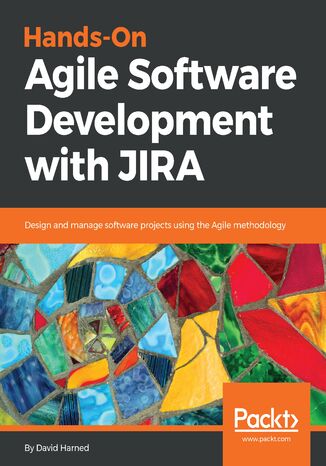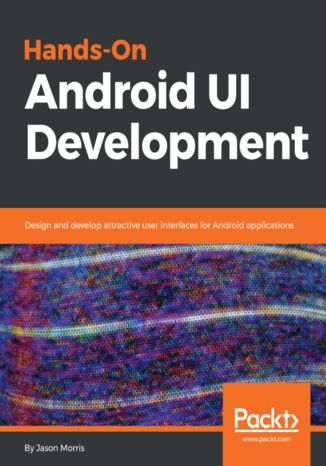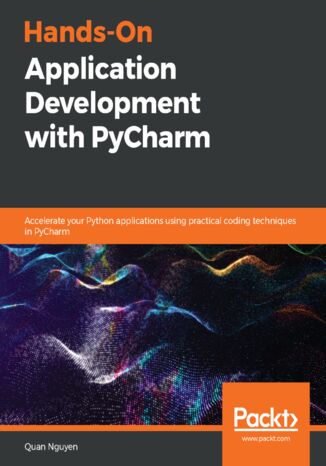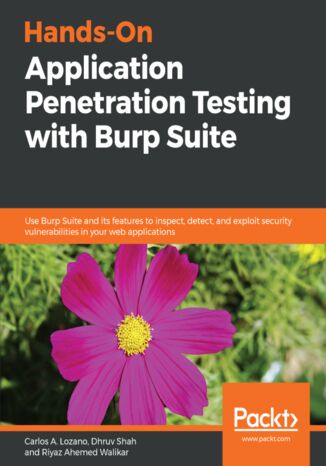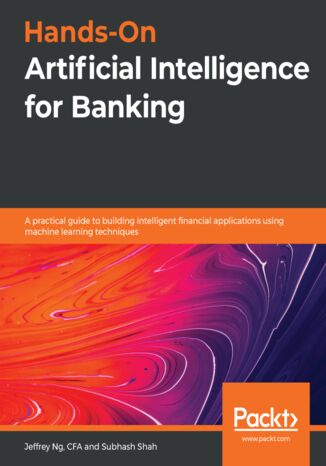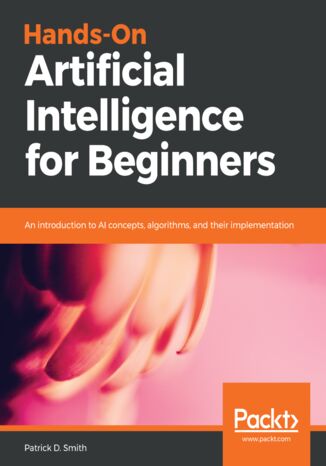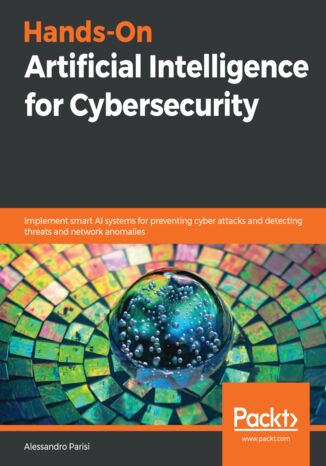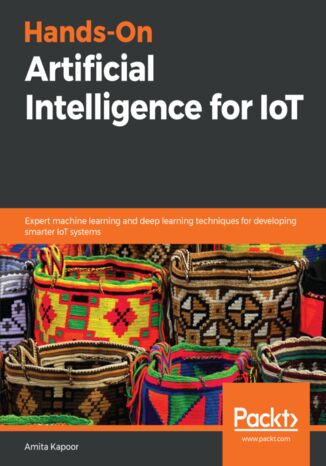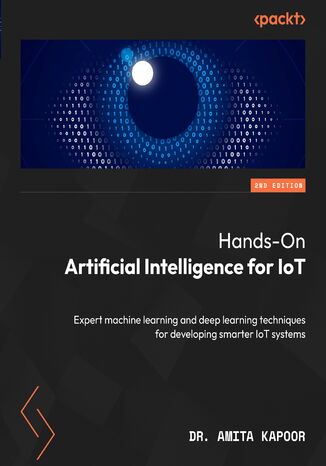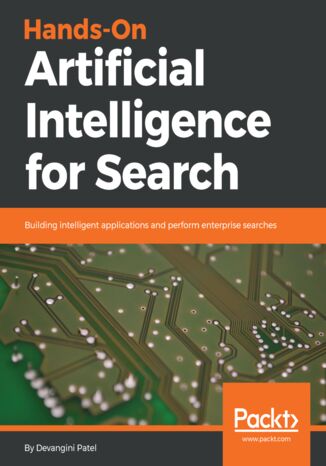Категорії
-
- Біткойн
- Ділова жінка
- Коучинг
- Контроль
- Електронний бізнес
- Економіка
- Фінанси
- Фондова біржа та інвестиції
- Особисті компетенції
- Комп'ютер в офісі
- Комунікація та переговори
- Малий бізнес
- Маркетинг
- Мотивація
- Мультимедійне навчання
- Нерухомість
- Переконання та НЛП
- Податки
- Соціальна політика
- Порадники
- Презентації
- Лідерство
- Зв'язки з громадськістю
- Звіти, аналізи
- Секрет
- Соціальні засоби комунікації
- Продаж
- Стартап
- Ваша кар'єра
- Управління
- Управління проектами
- Людські ресурси (HR)
-
- Architektura i wnętrza
- Безпека життєдіяльності
- Biznes i Ekonomia
- Будинок та сад
- Електронний бізнес
- Ekonomia i finanse
- Езотерика
- Фінанси
- Особисті фінанси
- Бізнес
- Фотографія
- Інформатика
- Відділ кадрів та оплата праці
- Для жінок
- Комп'ютери, Excel
- Бухгалтерія
- Культура та література
- Наукові та академічні
- Охорона навколишнього середовища
- Впливові
- Освіта
- Податки
- Подорожі
- Психологія
- Релігія
- Сільське господарство
- Ринок книг і преси
- Транспорт та спедиція
- Здоров'я та краса
-
- Офісні застосунки
- Бази даних
- Біоінформатика
- Бізнес ІТ
- CAD/CAM
- Digital Lifestyle
- DTP
- Електроніка
- Цифрова фотографія
- Комп'ютерна графіка
- Ігри
- Хакування
- Hardware
- IT w ekonomii
- Наукові пакети
- Шкільні підручники
- Основи комп'ютера
- Програмування
- Мобільне програмування
- Інтернет-сервери
- Комп'ютерні мережі
- Стартап
- Операційні системи
- Штучний інтелект
- Технологія для дітей
- Вебмайстерність
-
- Антології
- Балада
- Біографії та автобіографії
- Для дорослих
- Драми
- Журнали, щоденники, листи
- Епос, епопея
- Нарис
- Наукова фантастика та фантастика
- Фельєтони
- Художня література
- Гумор, сатира
- Інше
- Класичний
- Кримінальний роман
- Нехудожня література
- Художня література
- Mity i legendy
- Лауреати Нобелівської премії
- Новели
- Побутовий роман
- Okultyzm i magia
- Оповідання
- Спогади
- Подорожі
- Оповідна поезія
- Поезія
- Політика
- Науково-популярна
- Роман
- Історичний роман
- Проза
- Пригодницька
- Журналістика
- Роман-репортаж
- Romans i literatura obyczajowa
- Сенсація
- Трилер, жах
- Інтерв'ю та спогади
-
- Археологія
- Bibliotekoznawstwo
- Кінознавство / Теорія кіно
- Філологія
- Польська філологія
- Філософія
- Finanse i bankowość
- Географія
- Економіка
- Торгівля. Світова економіка
- Історія та археологія
- Історія мистецтва і архітектури
- Культурологія
- Мовознавство
- літературні студії
- Логістика
- Математика
- Ліки
- Гуманітарні науки
- Педагогіка
- Навчальні засоби
- Науково-популярна
- Інше
- Психологія
- Соціологія
- Театральні студії
- Богослов’я
- Економічні теорії та науки
- Transport i spedycja
- Фізичне виховання
- Zarządzanie i marketing
-
- Безпека життєдіяльності
- Історія
- Дорожній кодекс. Водійські права
- Юридичні науки
- Охорона здоров'я
- Загальне, компендіум
- Академічні підручники
- Інше
- Закон про будівництво і житло
- Цивільне право
- Фінансове право
- Господарське право
- Господарське та комерційне право
- Кримінальний закон
- Кримінальне право. Кримінальні злочини. Кримінологія
- Міжнародне право
- Міжнародне та іноземне право
- Закон про охорону здоров'я
- Закон про освіту
- Податкове право
- Трудове право та законодавство про соціальне забезпечення
- Громадське, конституційне та адміністративне право
- Кодекс про шлюб і сім'ю
- Аграрне право
- Соціальне право, трудове право
- Законодавство Євросоюзу
- Промисловість
- Сільське господарство та захист навколишнього середовища
- Словники та енциклопедії
- Державні закупівлі
- Управління
-
- Африка
- Альбоми
- Південна Америка
- Центральна та Північна Америка
- Австралія, Нова Зеландія, Океанія
- Австрія
- Азії
- Балкани
- Близький Схід
- Болгарія
- Китай
- Хорватія
- Чеська Республіка
- Данія
- Єгипет
- Естонія
- Європа
- Франція
- Гори
- Греція
- Іспанія
- Нідерланди
- Ісландія
- Литва
- Латвія
- Mapy, Plany miast, Atlasy
- Мініпутівники
- Німеччина
- Норвегія
- Активні подорожі
- Польща
- Португалія
- Інше
- Przewodniki po hotelach i restauracjach
- Росія
- Румунія
- Словаччина
- Словенія
- Швейцарія
- Швеція
- Світ
- Туреччина
- Україна
- Угорщина
- Велика Британія
- Італія
-
- Філософія життя
- Kompetencje psychospołeczne
- Міжособистісне спілкування
- Mindfulness
- Загальне
- Переконання та НЛП
- Академічна психологія
- Психологія душі та розуму
- Психологія праці
- Relacje i związki
- Батьківство та дитяча психологія
- Вирішення проблем
- Інтелектуальний розвиток
- Секрет
- Сексуальність
- Спокушання
- Зовнішній вигляд та імідж
- Філософія життя
-
- Біткойн
- Ділова жінка
- Коучинг
- Контроль
- Електронний бізнес
- Економіка
- Фінанси
- Фондова біржа та інвестиції
- Особисті компетенції
- Комунікація та переговори
- Малий бізнес
- Маркетинг
- Мотивація
- Нерухомість
- Переконання та НЛП
- Податки
- Соціальна політика
- Порадники
- Презентації
- Лідерство
- Зв'язки з громадськістю
- Секрет
- Соціальні засоби комунікації
- Продаж
- Стартап
- Ваша кар'єра
- Управління
- Управління проектами
- Людські ресурси (HR)
-
- Антології
- Балада
- Біографії та автобіографії
- Для дорослих
- Драми
- Журнали, щоденники, листи
- Епос, епопея
- Нарис
- Наукова фантастика та фантастика
- Фельєтони
- Художня література
- Гумор, сатира
- Інше
- Класичний
- Кримінальний роман
- Нехудожня література
- Художня література
- Mity i legendy
- Лауреати Нобелівської премії
- Новели
- Побутовий роман
- Okultyzm i magia
- Оповідання
- Спогади
- Подорожі
- Поезія
- Політика
- Науково-популярна
- Роман
- Історичний роман
- Проза
- Пригодницька
- Журналістика
- Роман-репортаж
- Romans i literatura obyczajowa
- Сенсація
- Трилер, жах
- Інтерв'ю та спогади
-
- Філософія життя
- Міжособистісне спілкування
- Mindfulness
- Загальне
- Переконання та НЛП
- Академічна психологія
- Психологія душі та розуму
- Психологія праці
- Relacje i związki
- Батьківство та дитяча психологія
- Вирішення проблем
- Інтелектуальний розвиток
- Секрет
- Сексуальність
- Спокушання
- Зовнішній вигляд та імідж
- Філософія життя
Hamulce sukcesu. Uwierz w siebie i odkryj jak przyspieszyć na drodze do sukcesu?
Poznaj ostateczną prawdę na temat tego, co blokuje Twój osobisty sukces. Każda książka motywacyjna działa na nas jak Red Bull. Wprowadzamy w życie pozytywne mikrozmiany. Tydzień po przeczytaniu takiej książki jest magiczny, czujesz, że to ma sens, ale potem Nie wiem, czy też odczuwasz, że te naładowane baterie tracą siłę, a Ty wracasz do starych nawyków? Poznaj najbardziej destrukcyjne blokady zainstalowane w Twoim umyśle: Nadmierne skupienie się na przeszłości. Z kartek tej książki dowiesz się, na czym skoncentrować się, żeby osiągać zamierzone cele w krótszym czasie. Traktowanie przeszkód i ograniczeń jako realnej blokady na drodze do sukcesu. Wykręty i wymówki. W książce poznasz metody eliminowania tego typu blokad. Strach i lęk. Dowiesz się, że lęk przed wyzwaniami nie ma żadnych logicznych podstaw. Jest po prostu sztucznym tworem człowieka. Brak wiary i negatywne myśli. Wszystko to oraz wiele innych objawów to efekt działania Hamulców Sukcesu. Bez tej instrukcji trudno znaleźć je na własną rękę, nie mówiąc już o tym, że nie wiadomo, jak je wyłączyć. Janusz Kozioł w prosty sposób pokazuje, jak wykryć ograniczenia i w jaki sposób je zdemontować. To ważne: pozbycie się ograniczeń, które przez lata fantastycznie funkcjonowały w Twoim umyśle, nie jest czymś, co uda się zrobić w kilka dni. Dlatego warto stale wracać do tej książki i sprawdzać postępy na drodze do maksymalnych osiągnięć.
Han dislande est un roman fantastique de Victor Hugo ou mlent gothique et romantisme, le roman se ménage une place confortable. Caveaux funéraires, apprentis savants disséquant les morts, géant sanguinaire se jouant de la justice des hommes, ours polaire domestiqué... et Han, qui vit avec un ours et qui boit du sang humain. Un monstre, une révolte populaire, une ligne damours. Ce roman se semble dtre plein dinattendus!
Han dislande est un roman fantastique de Victor Hugo ou mlent gothique et romantisme, le roman se ménage une place confortable. Caveaux funéraires, apprentis savants disséquant les morts, géant sanguinaire se jouant de la justice des hommes, ours polaire domestiqué... et Han, qui vit avec un ours et qui boit du sang humain. Un monstre, une révolte populaire, une ligne damours. Ce roman se semble dtre plein dinattendus!
Akcja utworu rozgrywa się w Norwegii na przełomie XVII i XVIII w. wokół intryg dworskich na dworze duńskim. Główne wątki utworu to miłość młodego szlachcica Ordenera do córki popadłego w niełaskę kanclerza Ethel, konflikt społeczny między górnikami a duńską szlachtą oraz działalność Hana z Islandii, tajemniczego mordercy, pijącego krew swoich ofiar z ich wydrążonych czaszek i przychylnie odnoszącego się jedynie do udomowionego niedźwiedzia. Zarówno krytyka dziewiętnastowieczna, jak i późniejsza przyjęła z dużym zdumieniem nagromadzenie przerażających postaci i motywów w utworze. Sam Charles Nodier, recenzując powieść Hugo w ‘La Quotidienne’, konstatował, iż ‘Han z Islandii’ jest dalece bardziej okrutny, niż wcześniejsze powstające we Francji powieści frenetyczne. Chwalił jednak dzieło za żywość stylu, zręczność konstrukcji oraz piękno opisów i utrzymywanie dramatycznego napięcia. (za Wikipedią).
A classic detective story of murder and punishment by one of Americas finest mystery writers. Widow Clemmens is struck down in her parlor while the towns legal professionals chat outside the courthouse down the street and there is no sign of the killer. An investigation is made and two equally plausible suspects are quickly unearthed. But who actually committed the crime? And what role does the mysterious Miss Imogene Dare play in this drama? A powerful detective story, constructed with marvelous ingenuity and minuteness of detail, with a captivating jury trial youll be forced to admit that fiction is stranger than truth.
Handel internetowy. Perspektywa e-konsumenta
Bogdan Gregor, Magdalena Kalińska-Kula
Rewolucja cyfrowa, znosząc barierę czasu i przestrzeni, motywuje do zakupów w Internecie, a dostępność kanału wirtualnego transformuje zachowania zakupowe konsumentów. Dynamicznie rozwijający się sektor handlu internetowego implikuje daleko idące zmiany w postawach, zachowaniach rynkowych i oczekiwaniach współczesnych konsumentów. Podjęty w pracy problem badawczy sprowadza się do rozpoznania zachowań współczesnego (nowego) konsumenta, który podejmuje decyzje w środowisku cyfrowym, zdominowanym przez innowacyjne technologie. Praca ma charakter teoretyczno-empiryczny. Podstawę źródłową rozważań stanowi obszerna literatura przedmiotu oraz wyniki własnych badań empirycznych o zasięgu międzynarodowym. Badaniami objęto konsumentów z Polski oraz pięciu innych krajów europejskich - z Białorusi, Ukrainy, Hiszpanii, Portugalii i Włoch. Na bazie pozyskanych danych przeprowadzono analizę porównawczą dotyczącą roli i uwarunkowań rozwoju handlu internetowego oraz postaw i zachowań e-konsumentów w procesach zakupowych w przekroju badanych krajów. Książka wpisuje się w niezwykle aktualny i ważny nurt rozważań związanych z trans- formacją biznesu w erze technologii cyfrowych. Ma ona walory poznawcze, metodyczne i aplikacyjne, co pozwala kierować ją do szerokiego grona odbiorców. Może być ona inspirująca dla przedstawicieli świata nauki - badaczy zajmujących się tą problematyką, użyteczna dla podmiotów funkcjonujących w branży e-commerce, a także wykorzystana w dydaktyce - na studiach z zakresu ekonomii i zarządzania oraz na studiach podyplomowych, poświęconych problematyce e-commerce. Praca dotyczy istotnych i aktualnych problemów zmian w zachowaniach konsumentów oraz zmian w funkcjonowaniu przedsiębiorstw, których zadaniem jest dostosowanie się do oczekiwań nowej generacji nabywców. Silną stroną pracy, jej stroną oryginalną, są przeprowadzone i opisane badania, prowadzone w kilku krajach Europy Wschodniej i Zachodniej. Praca ma wymiar międzynarodowy. Z recenzji prof. Henryka Mruka
Handel opcjami dla bystrzaków. Wydanie IV
Analizuj i handluj opcjami jak profesjonalista Zarabiaj i ograniczaj ryzyko na każdym rynku ądź o krok przed sztuczną inteligencją! Obracaj opcjami niczym zawodowiec z Wall Street! Opcje kupna, opcje sprzedaży, ceny wykonania, rentowność ― tu znajdziesz wyjaśnienie wszystkich kwestii, dzięki którym możesz działać i zarabiać na rynkach wzrostowych, spadkowych i płaskich. Bardziej zrównoważone, strategiczne i oczywiście dochodowe portfolio to muzyka dla Twoich uszu, prawda? Pozwól, aby ta książka stała się Twoim mentorem, który pomoże Ci wskoczyć w wir walki na arenie opcji! Zyskiwanie na pogorszeniu sytuacji rynkowej Szacowanie ryzyka i zysków Podstawy analizy technicznej i sektorowej Opcje ochrony własnych aktywów Odkrycie indywidualnego stylu tradingowego
Handel w przestrzeni wielkomiejskiej. Przykład Łodzi
Celem tego opracowania jest przede wszystkim identyfikacja stopnia zróżnicowania obecnej struktury przestrzennej placówek handlowych i ich pracowników, jak też dostępności tych placówek w przestrzeni wielkomiejskiej, na przykładzie Łodzi. Podjęto również próbę typologii przestrzennej łódzkiego handlu. Tło dla tej problematyki stanowiło naświetlenie genezy oraz głównych nurtów badawczych nowej geografii handlu, w nawiązaniu do tradycyjnego podejścia stosowanego w tej dziedzinie geografii ekonomicznej. Omówienie współczesnej roli handlu w kształtowaniu przestrzeni miejskiej Łodzi zostało też poprzedzone charakterystyką rozwoju historycznego działalności handlowej w mieście, przy uwypukleniu jej przemian strukturalnych i wpływu tej sfery życia gospodarczego na kierunki zagospodarowania przestrzennego miasta.
Handlarze Arabskich Niewolników
Są ludzie, których brak empatii pozbawia człowieczeństwa do tego stopnia, że odbierają je innym. Abi najpierw została sprzedana przez swojego ojca za długi, a potem przekazywano ją z rąk do rąk jeszcze pięć razy. Dziś wciąż jest towarem. Sarika miała kilkanaście lat, gdy wywołano u niej przedwczesną menopauzę, by miesiączka nie przeszkadzała jej w pracy. Ni Ketut nie mogła spłacić pożyczki, dlatego wraz z kilkuletnimi wnukami zmuszona została do wygrzebywania ziarenek kawy ze zwierzęcych odchodów Mimo rozwoju cywilizacji ludzie wciąż są towarem. Marcin Margielewski z bliska przygląda się procederowi handlu nimi. W trakcie swoich podróży, których efektem jest ta książka, dostaje propozycje przeprowadzania rekrutacji w Polsce. Jest świadkiem zakupów w agencji pośrednictwa pracy, która obiecuje spełnienie marzeń, a tak naprawdę handluje żywym towarem. Poznaje tych, którzy w zdesperowanych biedą istotach widzą wyłącznie sposób na wzbogacenie się. Ta książka to epilog dla historii opisanych w trylogii Niewolnicy i dowód na to, że nawet jeśli coś nas bezpośrednio nie dotyka, wcale nie oznacza to, że nas nie dotyczy.
Co się stało w małym mieście u schyłku II wojny światowej? Kim jest tajemniczy Grom, którego boją się nawet funkcjonariusze milicji w Podcieniach? I ile można zaryzykować, kierując się poczuciem obywatelskiego obowiązku? Oto intrygująca powieść o losach Polaków z sennego miasteczka, którym trudno skłonić do zeznań jednego z członków bandy i zrozumieć motywy działania urzędników z prokuratury. Znajdziesz tu wiele zaskakujących sytuacji na czele z przebraniem i transportem rannego w ciężarówce pełnej jabłek. Jeśli lubisz kryminały sensacyjne osadzone w ponurych i kontrowersyjnych realiach wczesnego PRL-u, ta książka ze znanej serii Ewa wzywa 07, wydawanej przez Państwowe Wydawnictwo Iskry w latach 1968-1989 pozycją idealną właśnie dla Ciebie. W magazynie usłyszeli strzał. Melancholik dopadł zabitego deskami okna. Zaczął nasłuchiwać, ściągając z dłoni skórkowe rękawiczki. Irka leżała ciągle na rozsypanych jabłkach, jej policzki poznaczone były sinymi pręgami. Ten z latarką znalazł na jednej z półek duży pilnik. Użył go teraz jako łomu, podważając jedną z desek w zabitym oknie. Strzał jakby stamtąd nasłuchiwał Melancholik Od strony posterunku Płomień? Nie mógł wpaść tak głupio!... rzucił ten z latarką. PRL kryminalnie PRL kryminalnie seria składająca się z powieści milicyjnych najbardziej poczytnych autorek i autorów czasów PRL. Maciej Bordowicz (ur. 16 września 1941 w Mińsku Mazowieckim, zm. 6 października 2009 r. w Warszawie) polski pisarz, aktor, reżyser filmów, sztuk teatralnych, telewizyjnych i słuchowisk. Absolwent Wydziału Aktorskiego i Reżyserskiego PWST w Warszawie. Odznaczony Złotym Krzyżem Zasługi.
Kontynuacja powieści "Zamek Laghortów". Wydarzenia w średniowiecznym zamku nabierają tempa. Kyla przykładnie trenuje sztuki walki pod okiem Mortha. Dziewczyna nie zapomina jednak o swoim domu i codziennie samotnie odwiedza rodzinną wioskę. Któregoś dnia nie zastaje tam żywej duszy, tylko sterty trupów mężczyzn i starców. Po reszcie nie ma śladu. Morth nie ma wątpliwości, że sprawcami rzezi są handlarze niewolników. Wraz z dziewczyną rzuca się w pościg, którego celem jest odbicie uprowadzonych bliskich Kyli. Na ich drodze raz po raz stają zjawy i niezwykłe, baśniowe stworzenia.
Książka ta została napisana dla tych, którzy poszukują większej satysfakcji w roli handlowca, szanują swój zawód i chcą być profesjonalistami. Jest to praktyczny poradnik dla wszystkich, którzy obsługują klienta i sprzedają produkty swojej firmy. Specyfiką tej książki jest to, że dotyczy polskiego rynku, polskich klientów i polskich handlowców. Autorzy, korzystając z dziesięcioletniego doświadczenia w szkoleniu pracowników firm handlowych, opisują konkretne narzędzia: zjednywanie klienta i rozpoznawania jego potrzeb, radzenia sobie z grami kupieckimi, budowania profesjonalnej podstawy handlowej. Handlowanie to sztuka zadowolenia klienta bez ulegania jego wygórowanym żądaniom. Do każdego klienta prowadzi jakaś droga, tylko nie zawsze handlowcy mają odwagę na nią wkroczyć.
Effective machine learning (ML) now demands not just building models but deploying and managing them at scale. Written by a seasoned senior software engineer with high-level expertise in both MLOps and LLMOps, Hands-On MLOps on Azure equips ML practitioners, DevOps engineers, and cloud professionals with the skills to automate, monitor, and scale ML systems across environments.The book begins with MLOps fundamentals and their roots in DevOps, exploring training workflows, model versioning, and reproducibility using pipelines. You'll implement CI/CD with GitHub Actions and the Azure ML CLI, automate deployments, and manage governance and alerting for enterprise use. The author draws on their production ML experience to provide you with actionable guidance and real-world examples. A dedicated section on LLMOps covers operationalizing large language models (LLMs) such as GPT-4 using RAG patterns, evaluation techniques, and responsible AI practices. You'll also work with case studies across Azure, AWS, and GCP that offer practical context for multi-cloud operations.Whether you're building pipelines, packaging models, or deploying LLMs, this guide delivers end-to-end strategy to build robust, scalable systems. By the end of this book, you'll be ready to design, deploy, and maintain enterprise-grade ML solutions with confidence.
As teams scale in size, project management can get very complicated. One of the best tools to deal with this kind of problem is JIRA. This book will start by organizing your project requirements and the principles of Agile development to get you started. You will then be introduced to set up a JIRA account and the JIRA ecosystem to help you implement a dashboard for your team's work and issues. You will learn how to manage any issues and bugs that might emerge in the development stage. Going ahead, the book will help you build reports and use them to plan the releases based on the study of the reports. Towards the end, you will come across working with the gathered data and create a dashboard that helps you track the project's development.
A great user interface (UI) can spell the difference between success and failure for any new application. This book will show you not just how to code great UIs, but how to design them as well. It will take novice Android developers on a journey, showing them how to leverage the Android platform to produce stunning Android applications. Begin with the basics of creating Android applications and then move on to topics such as screen and layout design. Next, learn about techniques that will help improve performance for your application. Also, explore how to create reactive applications that are fast, animated, and guide the user toward their goals with minimal distraction. Understand Android architecture components and learn how to build your application to automatically respond to changes made by the user. Great platforms are not always enough, so this book also focuses on creating custom components, layout managers, and 2D graphics. Also, explore many tips and best practices to ease your UI development process. By the end, you'll be able to design and build not only amazing UIs, but also systems that provide the best possible user experience.
JetBrain’s PyCharm is the most popular Integrated Development Environment (IDE) used by the Python community thanks to its numerous features that facilitate faster, more accurate, and more productive programming practices. However, the abundance of options and customizations can make PyCharm seem quite intimidating.Hands-on Application Development with PyCharm starts with PyCharm’s installation and configuration process, and systematically takes you through a number of its powerful features that can greatly improve your productivity. You’ll explore code automation, version control, graphical debugging/testing, management of virtual environments, and much more. Finally, you’ll delve into specific PyCharm features that support web development and data science, two of the fastest growing applications in Python programming. These include the integration of the Django framework as well as the extensive support for IPython and Jupyter Notebook.By the end of this PyCharm book, you will have gained extensive knowledge of the tool and be able to implement its features and make the most of its support for your projects.
Bruce M. Van Horn II, Quan Nguyen
In the quest to develop robust, professional-grade software with Python and meet tight deadlines, it’s crucial to have the best tools at your disposal. In this second edition of Hands-on Application Development with PyCharm, you’ll learn tips and tricks to work at a speed and proficiency previously reserved only for elite developers.To achieve that, you’ll be introduced to PyCharm, the premiere professional integrated development environment for Python programmers among the myriad of IDEs available. Regardless of how Python is utilized, whether for general automation scripting, utility creation, web applications, data analytics, machine learning, or business applications, PyCharm offers tooling that simplifies complex tasks and streamlines common ones. In this book, you'll find everything you need to harness PyCharm's full potential and make the most of Pycharm's productivity shortcuts. The book comprehensively covers topics ranging from installation and customization to web development, database management, and data analysis pipeline development helping you become proficient in Python application development in diverse domains.By the end of this book, you’ll have discovered the remarkable capabilities of PyCharm and how you can achieve a new level of capability and productivity.
Carlos A. Lozano, Dhruv Shah, Riyaz Ahemed Walikar
Burp suite is a set of graphic tools focused towards penetration testing of web applications. Burp suite is widely used for web penetration testing by many security professionals for performing different web-level security tasks.The book starts by setting up the environment to begin an application penetration test. You will be able to configure the client and apply target whitelisting. You will also learn to setup and configure Android and IOS devices to work with Burp Suite. The book will explain how various features of Burp Suite can be used to detect various vulnerabilities as part of an application penetration test. Once detection is completed and the vulnerability is confirmed, you will be able to exploit a detected vulnerability using Burp Suite. The book will also covers advanced concepts like writing extensions and macros for Burp suite. Finally, you will discover various steps that are taken to identify the target, discover weaknesses in the authentication mechanism, and finally break the authentication implementation to gain access to the administrative console of the application.By the end of this book, you will be able to effectively perform end-to-end penetration testing with Burp Suite.
Remodeling your outlook on banking begins with keeping up to date with the latest and most effective approaches, such as artificial intelligence (AI). Hands-On Artificial Intelligence for Banking is a practical guide that will help you advance in your career in the banking domain. The book will demonstrate AI implementation to make your banking services smoother, more cost-efficient, and accessible to clients, focusing on both the client- and server-side uses of AI.You’ll begin by understanding the importance of artificial intelligence, while also gaining insights into the recent AI revolution in the banking industry. Next, you’ll get hands-on machine learning experience, exploring how to use time series analysis and reinforcement learning to automate client procurements and banking and finance decisions. After this, you’ll progress to learning about mechanizing capital market decisions, using automated portfolio management systems and predicting the future of investment banking. In addition to this, you’ll explore concepts such as building personal wealth advisors and mass customization of client lifetime wealth. Finally, you’ll get to grips with some real-world AI considerations in the field of banking. By the end of this book, you’ll be equipped with the skills you need to navigate the finance domain by leveraging the power of AI.
Virtual Assistants, such as Alexa and Siri, process our requests, Google's cars have started to read addresses, and Amazon's prices and Netflix's recommended videos are decided by AI. Artificial Intelligence is one of the most exciting technologies and is becoming increasingly significant in the modern world.Hands-On Artificial Intelligence for Beginners will teach you what Artificial Intelligence is and how to design and build intelligent applications. This book will teach you to harness packages such as TensorFlow in order to create powerful AI systems. You will begin with reviewing the recent changes in AI and learning how artificial neural networks (ANNs) have enabled more intelligent AI. You'll explore feedforward, recurrent, convolutional, and generative neural networks (FFNNs, RNNs, CNNs, and GNNs), as well as reinforcement learning methods. In the concluding chapters, you'll learn how to implement these methods for a variety of tasks, such as generating text for chatbots, and playing board and video games.By the end of this book, you will be able to understand exactly what you need to consider when optimizing ANNs and how to deploy and maintain AI applications.
Today's organizations spend billions of dollars globally on cybersecurity. Artificial intelligence has emerged as a great solution for building smarter and safer security systems that allow you to predict and detect suspicious network activity, such as phishing or unauthorized intrusions.This cybersecurity book presents and demonstrates popular and successful AI approaches and models that you can adapt to detect potential attacks and protect your corporate systems. You'll learn about the role of machine learning and neural networks, as well as deep learning in cybersecurity, and you'll also learn how you can infuse AI capabilities into building smart defensive mechanisms. As you advance, you'll be able to apply these strategies across a variety of applications, including spam filters, network intrusion detection, botnet detection, and secure authentication.By the end of this book, you'll be ready to develop intelligent systems that can detect unusual and suspicious patterns and attacks, thereby developing strong network security defenses using AI.
There are many applications that use data science and analytics to gain insights from terabytes of data. These apps, however, do not address the challenge of continually discovering patterns for IoT data. In Hands-On Artificial Intelligence for IoT, we cover various aspects of artificial intelligence (AI) and its implementation to make your IoT solutions smarter.This book starts by covering the process of gathering and preprocessing IoT data gathered from distributed sources. You will learn different AI techniques such as machine learning, deep learning, reinforcement learning, and natural language processing to build smart IoT systems. You will also leverage the power of AI to handle real-time data coming from wearable devices. As you progress through the book, techniques for building models that work with different kinds of data generated and consumed by IoT devices such as time series, images, and audio will be covered. Useful case studies on four major application areas of IoT solutions are a key focal point of this book. In the concluding chapters, you will leverage the power of widely used Python libraries, TensorFlow and Keras, to build different kinds of smart AI models.By the end of this book, you will be able to build smart AI-powered IoT apps with confidence.
Transform IoT devices into intelligent systems with this comprehensive guide by Amita Kapoor, Chief AI Officer at Tipz AI. Drawing on 25 years of expertise in developing intelligent systems across industries, she demonstrates how to harness the combined power of artificial intelligence and IoT technology. A pioneer in making AI and neuroscience education accessible worldwide, Amita guides you through creating smart, efficient systems that leverage the latest advances in both fields. This new edition is updated with various optimization techniques in IoT used for enhancing efficiency and performance. It introduces you to cloud platforms such as Platform as a Service (PaaS) and Infrastructure as a Service (IaaS) for analyzing data generated using IoT devices. You’ll learn about machine learning algorithms, deep learning techniques, and practical applications in real-world IoT scenarios and advance to creating AI models that work with diverse data types, including time series, images, and audio. You’ll also harness the power of widely used Python libraries, TensorFlow and Keras, to build a variety of smart AI models. By the end of the book, you’ll emerge as a master of AI-driven IoT, armed with invaluable experience in optimizing IoT devices, boosting their performance, and integrating AI algorithms to make intelligent decisions.
With the emergence of big data and modern technologies, AI has acquired a lot of relevance in many domains. The increase in demand for automation has generated many applications for AI in fields such as robotics, predictive analytics, finance, and more.In this book, you will understand what artificial intelligence is. It explains in detail basic search methods: Depth-First Search (DFS), Breadth-First Search (BFS), and A* Search, which can be used to make intelligent decisions when the initial state, end state, and possible actions are known. Random solutions or greedy solutions can be found for such problems. But these are not optimal in either space or time and efficient approaches in time and space will be explored. We will also understand how to formulate a problem, which involves looking at it and identifying its initial state, goal state, and the actions that are possible in each state. We also need to understand the data structures involved while implementing these search algorithms as they form the basis of search exploration. Finally, we will look into what a heuristic is as this decides the quality of one sub-solution over another and helps you decide which step to take.













